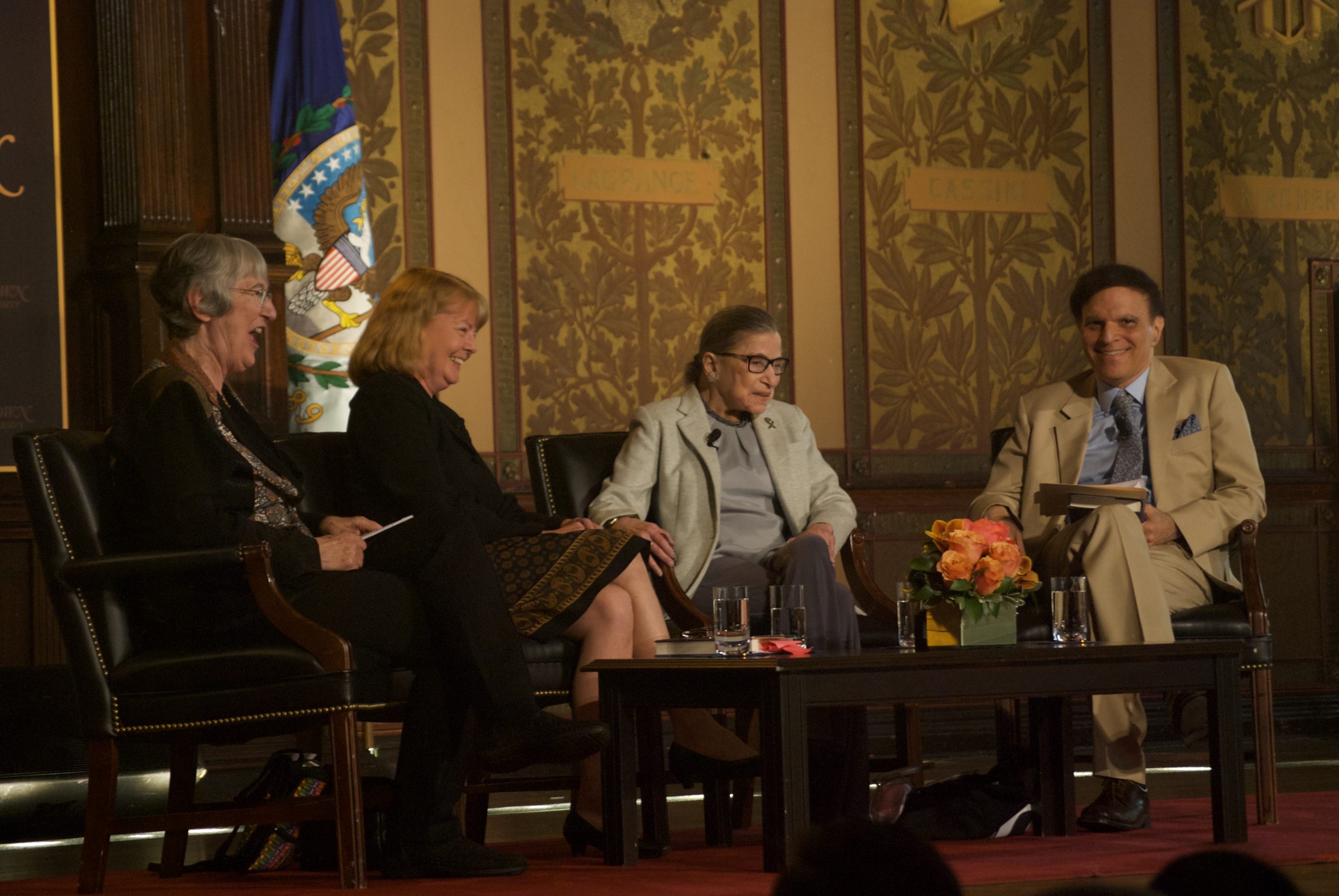Justice Ruth Bader Ginsburg participated in a panel to discuss her experiences in the United States’ legal system as part of the annual Marver H. Bernstein Symposium. Over 400 students and faculty gathered in Gaston Hall on April 27 to hear her thoughts on her past 50 years as a lawyer and justice, particularly on her experiences fighting for women’s rights.
Her appearance with Wendy Williams and Mary Harnett, both professors at the Georgetown Law Center and the justice’s official biographers, centered on her new collection of writings and speeches, In My Own Words. The panel was moderated by Robert A. Katzmann, Chief Judge of the Second U.S. Circuit Court of Appeals.
Ginsburg, the second woman ever nominated to the United States’ highest court, is often seen as a bastion of liberal values on the Supreme Court, although justices do not publicize their support for any political party or specific ideology. In his opening remarks, Katzmann praised Ginsburg’s writings and rulings and said that her works have turned her not only into an important figure in the courtroom, but also an important figure in American popular culture and society.
“Justice Ginsburg is celebrated for her impact as a judge on this country’s highest court, the second-longest member on the court, for her path marking contributions to laws’ developments, for her methodical, brilliant analyses and concise, elegant prose,” Katzmann said. “The American public admires her character, her values, and feel a connection with her.”
Ginsburg, Williams, and Harnett covered topics from the justice’s years at Cornell University, to her love of opera, including the opera “Scalia/Ginsburg,” which details her friendship and conflict with the late Justice Antonin Scalia. Consistent throughout the panel’s discussion was the theme of the justice’s work with gender equality and the women’s rights movement. Ginsburg lead the American Civil Liberties Union’s Women’s Rights Project in the 1970s, during which she took on the role of teaching the Supreme Court about gender-discrimination, especially discrimination in the legal system where women could not act as jurors in all 50 states until 1973.
“The first [step] was to convince judges that there was such a thing as gender-based discrimination ,” said Ginsburg. “By the 70s, I think, [they] well appreciated that race discrimination was odious, but they tended to think of differential treatment of women as [in] women’s favor.”
When asked a question by a student in the audience about what further steps were still to be made in terms of gender equality, Ginsburg said that the discrimination women face today is even harder to deal with than in that of the past because it is less blatant and targetable.
“The challenge is more daunting than the one we faced,” Ginsburg said. “I spoke before about explicit gender-biased laws. What’s left, is what’s called unconscious bias. It’s getting over that unconscious bias that remains a problem.”
During the panel, Ginsburg also reflected on the current political drama surrounding the vacancy left behind on the court by the death of Antonin Scalia. Less than a month ago, Justice Neil Gorsuch, a Trump administration nominee, was confirmed to fill that empty seat after a Senate vote along party lines. Ginsburg noted that when she was nominated by President Clinton, her biggest supporter had been a conservative senator under a Democrat-controlled Senate. She was confirmed with a 96-3 vote.
“There was a truly bipartisan spirit in the Congress,” Ginsburg said. “Watching the most recent confirmations, I wish there was a way that we could wave a magic wand and get back to the way it was and the way it should be.”
Image Credit: Julia Pinney






